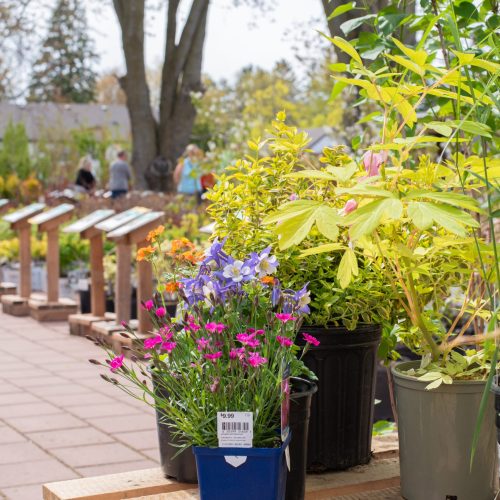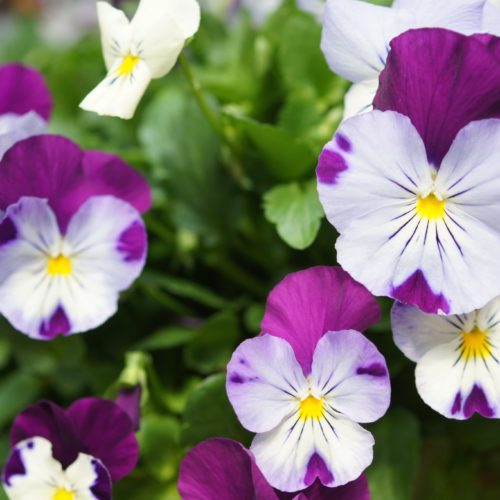
Top Tips for Beginner Gardeners
Welcome to the club gardening friend! Starting your own garden can be both exciting and overwhelming when you’re just starting out. Whether you have a spacious backyard update to tackle, or a few pots on a balcony, here are our top tips to help you get started on your gardening journey!
Know Your Sunlight
All plants have a preference for sunlight… ferns like to stay cool in the shade while zinnias love that warm summer sun. Spend some time paying attention to your garden’s sunlight patterns throughout the day and throughout the year (taking photos helps) and choose plants that suit the light levels your garden actually has. Plants will underperform if they’re getting too much or not enough light. Looking for shade garden ideas? Check out some Perennials for Shade
Think of Your Time
Life’s busy, and gardening can take a lot of time or a little. Don’t bite off more than you can chew! Start small and leave room to grow as you learn more and choose lower maintenance plants and garden styles if you don’t have or don’t want to spend a ton of time in your garden. Think of your garden as a project in constant evolution, not a one-time sprint.
Learn More About the Types of Plants found in a Garden Centre

Annuals
Complete their life cycle in one growing season. Typically have lots of long-lasting blooms and provide vibrant colours that make them a popular choice for seasonal bedding displays and containers. Examples include petunias, marigolds, zinnias and impatiens.

Perennials
Come back year after year. They can offer a wide range of colours, textures and sizes but are typically in bloom (if they bloom) for shorter periods compared to annuals. Examples include hostas, lavender, asters, ornamental grasses. Learn more about Perennials vs Annuals here.

Tropicals
Naturally grown in warmer climates, these are grown as annuals here in Ontario and enjoyed for the summer on a patio or pool side but have to move indoors for our winters. They often feature lush foliage, exotic flowers, or unique shapes that really add a touch of the tropics! Examples include bougainvillaea, gardenia, mandevilla, palm trees, banana plants and hibiscus.

Nursery (Perennial Trees & Shrubs)
Includes a wide range of perennial trees and shrubs, including both deciduous and evergreen varieties. These are the bread and butter of most gardens and can be mixed and matched with other plant types! Examples include maple trees, hydrangeas, lilacs, fruit trees.
Know Your Zones
Hardiness zones tell us what general range of temperatures plants can survive. The lower the zone number, the lower the temps they can handle. For example here in London Ontario, we’re considered to be in plant hardiness zone 6 (so plants that are rated for a zone 6 or lower should tolerate our cold winters), but Florida is a zone 9 or 10… their coldest temps are much higher than ours are here. If you’d like to read more about these zones, we have a full garden guide here for you!
Choose Wisely
When it comes to picking plants, it’s all about being honest with yourself and choosing the right plant for the right location. Make sure you consider all the above factors like your zone, sunlight, and maintenance time, as well as understanding if the area you’re planting in is usually wet, look at the soil type (is it really sandy and dry, or maybe it’s heavy clay), do you have other plants you need to work around?
Spending some time looking at your space throughout the changing season will help you to select plants that are more likely to thrive in those conditions and work with your garden not against it. Think of it like assembling a dream team for your garden—a squad of plants that complement each other, their environment and your lifestyle.
Gear Up
Get yourself a few tools that will make the job easier!
- Trowel – for digging small holes, transplanting seedlings, and loosening soil in tight spaces.
- Pruners – cutting tools designed for trimming, deadheading and shaping plants, especially woody stems and branches. They come in different types, including bypass pruners for clean cuts and anvil pruners for cutting thicker branches.
- Shovel – for digging holes, lifting, and moving soils. There are various shapes and sizes, including square-point, round-point, and flat-point, each suited to different gardening tasks.
- Watering Can or Hose with an Adjustable Nozzle – Either option is essential for keeping your plants happy, so choose the option that makes this job the easiest for you.
- Gloves – protect your hands from thorns and prickles, or even if you just don’t like to touch the bugs.

Capture the Magic
Gardening is a journey, and it’s easy to forget how far you’ve come. Snap some photos of your garden along the way to capture its evolution through the seasons – so you can dream ahead when the snow starts to fall. Consider keeping a garden journal to jot down plant purchase dates, variety names, performance notes, and future design ideas. It’s like creating a scrapbook of memories of your garden to look back on!
Embrace the Adventure!
Above all, remember that gardening is both an art and a science. It’s okay to make mistakes and learn as you go. Don’t be afraid to experiment and try new things. If you have questions, our amazing Daymakers are always here to help!




